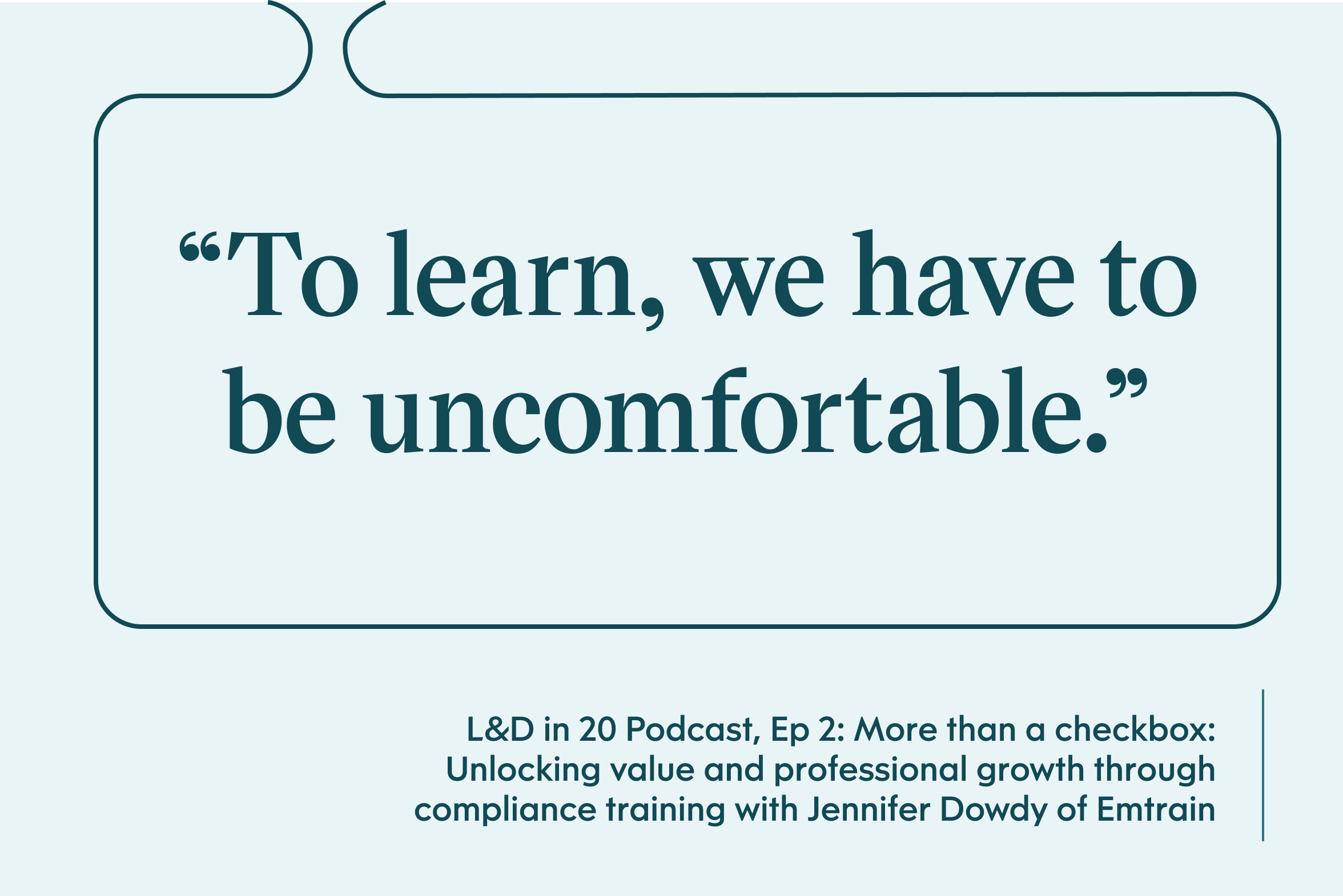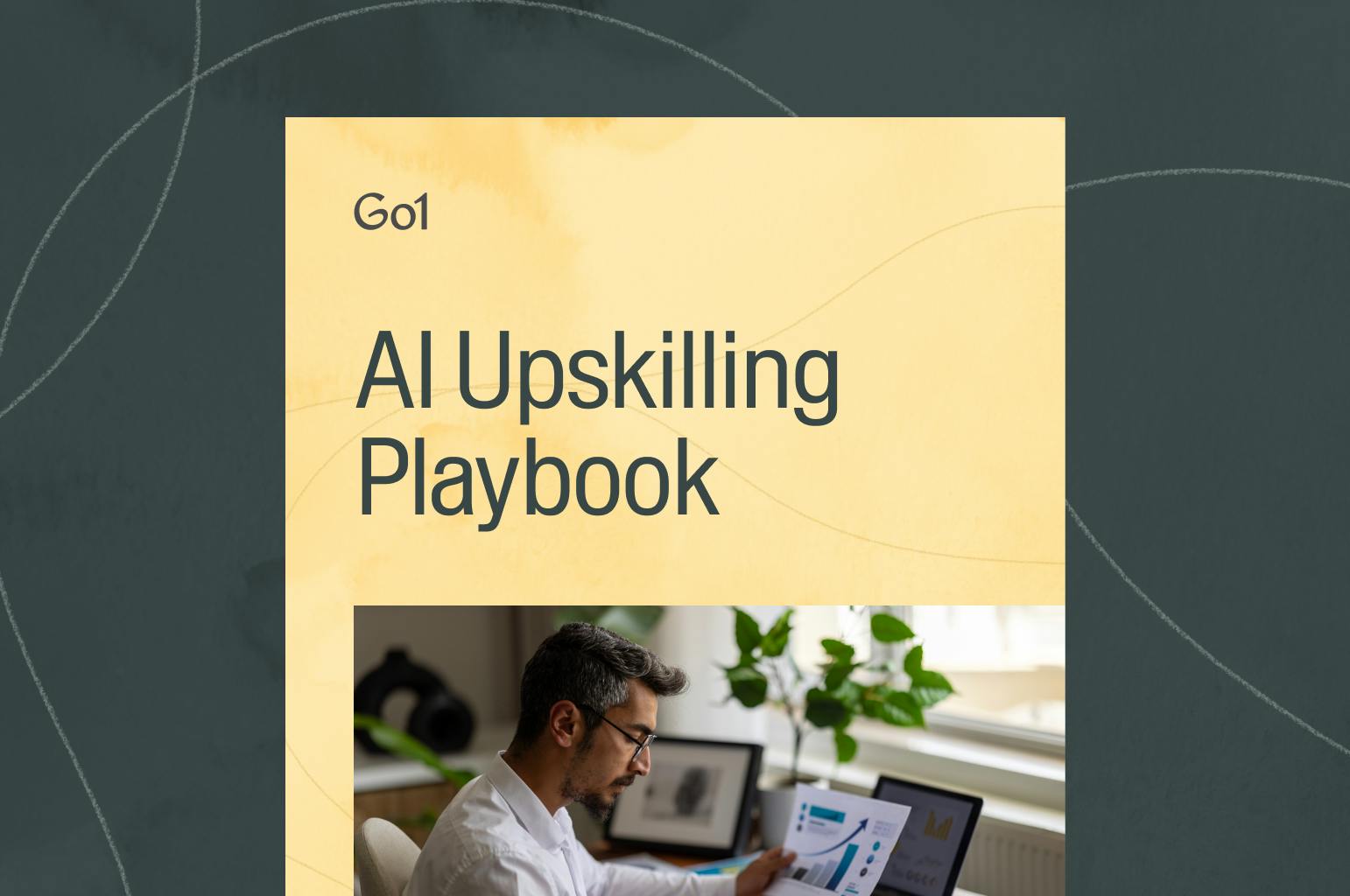Creating cohesion in a multigenerational workforce

Today's businesses include up to four generations working side by side. Each generation brings unique perspectives, values, and communication styles, which Jennifer Dowdy highlights in Episode 2 of our podcast, L&D in 20. She emphasized the growing need for organizations to find common ground among Baby Boomers, Gen X, Millenials, and Gen Z to foster workplace collaboration and inclusion. But what does this look like in practice? Let's dive right in.
Embracing shared values and definitions
One effective strategy is to frame workplace programs around universal human values like respect, inclusion, and trust — principles that transcend generational and cultural differences. We'd recommend starting with diversity and inclusion training led by a third-party or objective source, team-building exercises that bring a sense of achievement, and open communication channels to share feedback.
By showing a commitment to these shared values, companies can create a more cohesive and harmonious work environment where everyone feels valued and accepted, which in turn improves employee satisfaction, retention, and ultimately, better business outcomes. Prioritizing a culture of respect, inclusion, and trust can help companies not only attract top talent but also drive innovation and success. Take it a step further with these next steps:
- Develop a shared language: Working across different generations can often mean getting lost in translation. As a team, establish terms and concepts everyone understands and can easily find the definition for in a central place.
- Focus on behavior over policy: While what's written in the books is important from a legal or HR perspective, for everyday employees, behaviors matter most. Emphasize everyday practices in positive behavior like active listening, apology frameworks, and creating space for others' viewpoints. Be sure to work with your leaders on modeling behavior that aligns with companies as well.

Remembering generational expectations
Inclusivity isn't a one-size-fits-all topic and one of the key challenges to cohesion among a generationally diverse workforce is understanding and navigating the differing expectations and perspectives you work with. It's also important for older generations to be open to learning from younger generations and vice-versa, as this can lead to growth and innovation within the workplace. By acknowledging and respecting the expectations of different generations, companies can create a more collaborative workforce that isn't trying to one-up each other or get the upper hand.
For example, Gen Z and Millenial workers may want to discuss issues like climate change or societal conflicts, topics older generations may find unconventional in professional settings. It's important for companies to create space for these discussions, as it can lead to a better understanding of each other's values and a more well-rounded approach to problem-solving. Additionally, incorporating technology and digital tools into the workplace can also appeal to younger generations, who are often more adept at utilizing these resources.
Baby boomers and Gen X may value more formality and hierarchy at work, requiring younger leaders to adopt differing leadership strategies. For L&D teams, this could mean providing mentorship and guidance to help younger leaders develop new strategies from what they've come in with. Teaching managers and employees to hold space for generational differences, ask questions with curiosity, and connect through shared experiences is vital.

Intergenerational employee training
Across all employee training, we recommend implementing training programs and workshops that focus on intergenerational communication and collaboration. By educating employees on the unique perspectives and strengths that each generation brings to the table, companies can break down stereotypes and foster an understanding work environment that sees the value of each generation. Additionally, L&D teams should provide opportunities for employees of different generations to work together and learn from each other. Have an HR team of mostly Baby Boomers? Have them collaborate with that Gen Z employee running social media for the next recruitment campaign. This improves teamwork, the sharing of ideas, and a sense of mutual respect among employees of all ages.

Practical applications in employee training
If you're feeling inspired and ready to take action, here's some final advice, inspired by Jennifer Dowdy's insights from Episode 2 of L&D in 20:
- Whenever possible, use real-world scenarios to address common generational challenges your team is experiencing, like conflicting communication styles or work-life balance expectations.
- Incorporate interactive elements like role-play or scenario building into training whenever possible. This allows employees to practice resolving generational conflicts in a safe and hypothetical environment that they can recall for the real thing.
For more on the topic of cohesion among a multigenerational workforce, be sure to check out L&D in 20 Episode 2 with Jennifer Dowdy of Emtrain
Related Articles

Application Guide: How to use the Go1 AI for L&D Maturity Assessment to assess our workforce AI capability

AI upskilling made clear: A practical guide to building an AI-ready workforce

Go1 welcomes PepTalk

5 Data-Backed Insights Shaping the Future of AI in Workplace Learning

Train smarter, spend less
Train smarter,spend less
Connect with a Go1 expert to explore the best training options for your organization—no pressure, just solutions that work.